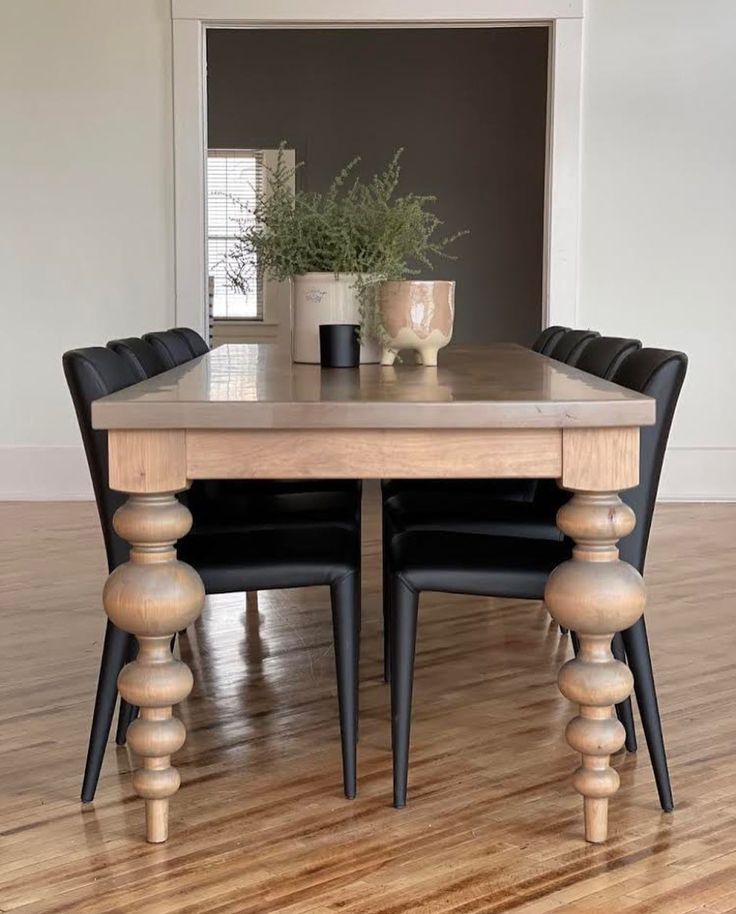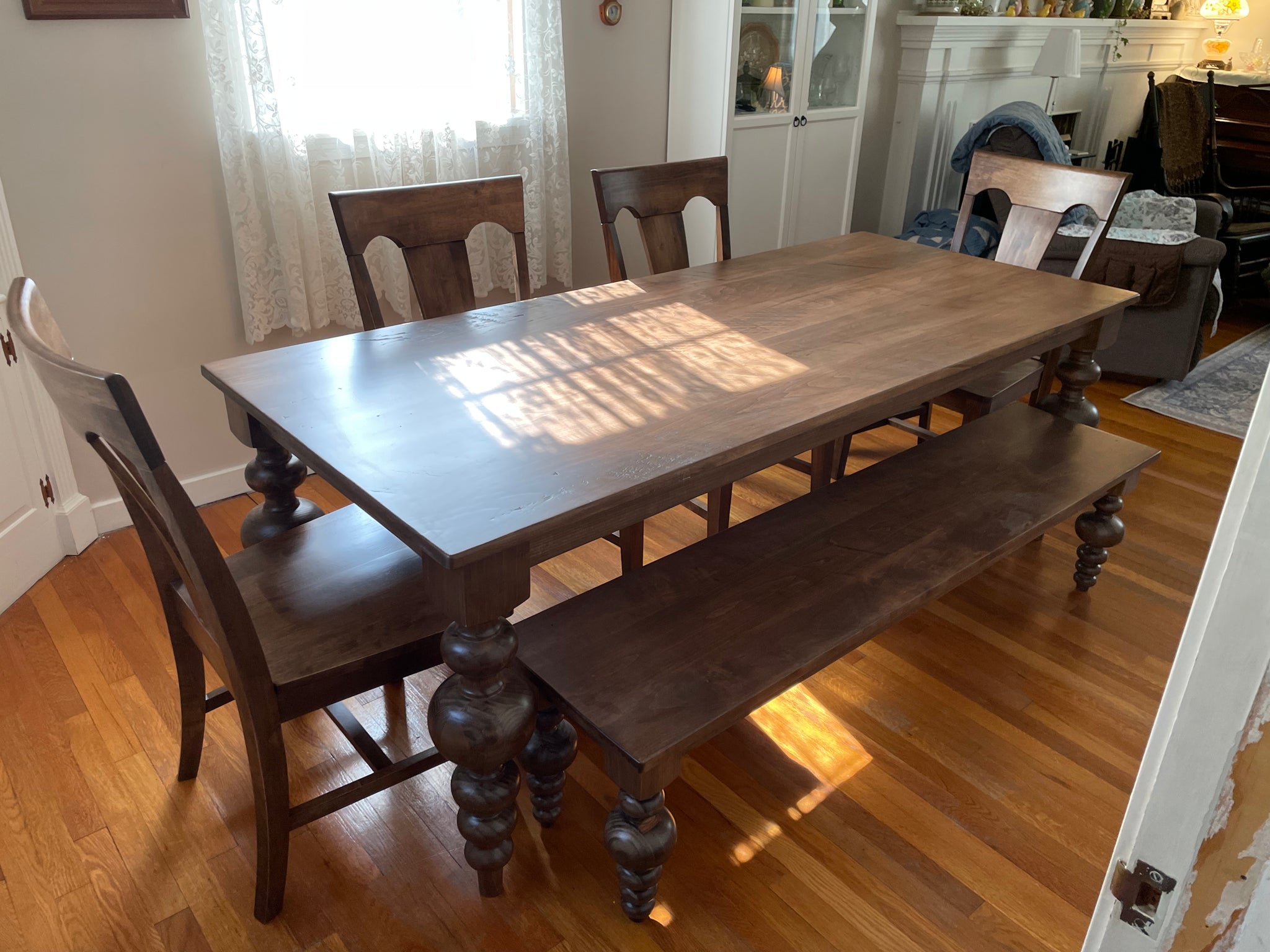Enhance Your Dining Room with Unique and Modern Dining Room Table Legs
Enhance Your Dining Room with Unique and Modern Dining Room Table Legs
Blog Article
From Typical to Modern: Discover the Ideal Dining-room Table Legs for Your Style
While timeless layouts such as cabriole and turned legs evoke a feeling of ageless refinement, contemporary designs like barrette and geometric options provide an opportunity for striking visual interest. As you think about these aspects, the question stays: exactly how can you flawlessly incorporate these varied leg designs to produce an unified eating experience?
Recognizing Table Leg Styles
The range of eating area table leg designs can considerably affect both the looks and capability of the room. Each leg style adds special aesthetic aspects and useful attributes, accommodating varied layout choices and usage needs. Recognizing these designs is crucial for selecting the appropriate table that aligns with your overall interior decoration vision.
As an example, tapered legs use a clean, traditional appearance that can improve a room's elegance, while stand bases supply stability and make the most of legroom, making them excellent for smaller sized rooms. Hairpin legs, a trademark of mid-century modern layout, present an industrial flair, permitting for an airy, open feeling. Trestle legs evoke rustic charm, offering robust assistance and a feeling of eternity.
Moreover, the option of materials plays a substantial duty. Wooden legs can bring warmth and appearance, whereas steel alternatives commonly share a sleek, contemporary ambiance. Inevitably, comprehending table leg styles is crucial for developing a natural dining area that mirrors personal style while making sure usefulness and convenience. By thoughtfully considering these elements, you can improve both the useful and aesthetic allure of your eating area.
Traditional Table Leg Options
When selecting dining room table legs, traditional choices commonly symbolize ageless sophistication and craftsmanship. These layouts mirror an abundant heritage and a commitment to quality, making them ideal for those that appreciate traditional looks.
Among the most renowned standard leg designs is the cabriole leg, characterized by its graceful bent form. This style typically features decorative carvings and is most frequently discovered in Queen Anne and Chippendale furnishings. One more preferred option is the transformed leg, which flaunts a collection of smooth, rounded forms that offer a timeless appearance while preserving stability.
Additionally, the straight leg, while basic, provides a unadorned and sturdy framework that can blend flawlessly with a range of tabletop designs. For those drawn to ornate detailing, claw-and-ball feet legs evoke a sense of grandeur and can act as a stunning focal point in any kind of dining room.
Last but not least, stand bases, although not strictly legs, supply an alternative traditional choice that enables adequate legroom and can be beautifully sculpted. Each of these typical leg styles contributes to the total atmosphere of a dining-room, marrying feature with aesthetic allure.

Modern Table Leg Layouts
Modern table leg layouts offer a varied array of styles that highlight clean lines and cutting-edge products. These styles frequently prioritize performance while offering as striking prime focus within an eating room. Minimalist visual appeals prevail, with legs crafted from products such as metal, glass, and crafted timber, which add to a modern and ventilated feel.
One his explanation popular layout is the hairpin leg, identified by its slender, tapered structure that provides security without frustrating the tabletop (dining room table legs). This style is commonly located in mid-century modern-day furniture and can easily complement various eating table shapes. One more pattern is making use of geometric shapes, where legs may handle asymmetrical or angular forms, adding aesthetic interest and a touch of artistry

Blending Designs for Special Spaces
Often, home owners look for to produce special dining spaces that show their personal design by mixing numerous design aspects. This method permits for the consolidation of varied aesthetics, resulting in an unified yet unique setting. Combining a rustic wood table with sleek, modern-day steel legs can create an appealing comparison that boosts the area's total appeal.
In addition, incorporating vintage table legs browse around these guys with modern table tops can stimulate a feeling of background while keeping a contemporary perceptiveness. Such combinations not just display private preference however also urge creativity, enabling property owners to curate an area that feels both personal and inviting.
Shade plays an essential function in this mixing procedure; picking table legs that enhance or comparison with the existing color design can enhance visual rate of interest. Whitewashed legs can soften the daring of a dark table surface, developing a well balanced visual.
Tips for Selecting the Right Legs
Choosing the right table legs is vital for accomplishing both functionality and aesthetic appeal in your eating space. Begin by considering the overall design of your room. Traditional settings gain from legs that include detailed makings or transformed styles, while contemporary areas might ask for streamlined, minimal designs.
Following, evaluate the elevation and stability of the legs. dining room table legs. Conventional dining tables vary between 28 to 30 inches in elevation, so ensure the legs complement this measurement for convenience. In addition, robust materials, such as hardwood or metal, can improve security and durability
Review the leg shape also-- choices consist of right, tapered, or pedestal designs. Straight legs offer a pop over to this web-site classic appearance, while conical legs can include a touch of style. Pedestal bases provide sufficient legroom and are optimal for smaller rooms.
Final Thought
In summary, picking the optimal dining room table legs needs cautious factor to consider of both modern-day and typical designs. By harmonizing leg design, elevation, and product with the general décor, a cohesive and welcoming ambience can be achieved.
The variety of eating room table leg styles can considerably affect both the aesthetics and functionality of the room. Inevitably, understanding table leg designs is important for developing a natural dining area that mirrors personal design while guaranteeing functionality and convenience.One of the most iconic typical leg designs is the cabriole leg, identified by its elegant bent form. Straight legs use a timeless appearance, while conical legs can add a touch of style.In recap, selecting the excellent eating space table legs requires mindful factor to consider of both traditional and modern styles.
Report this page